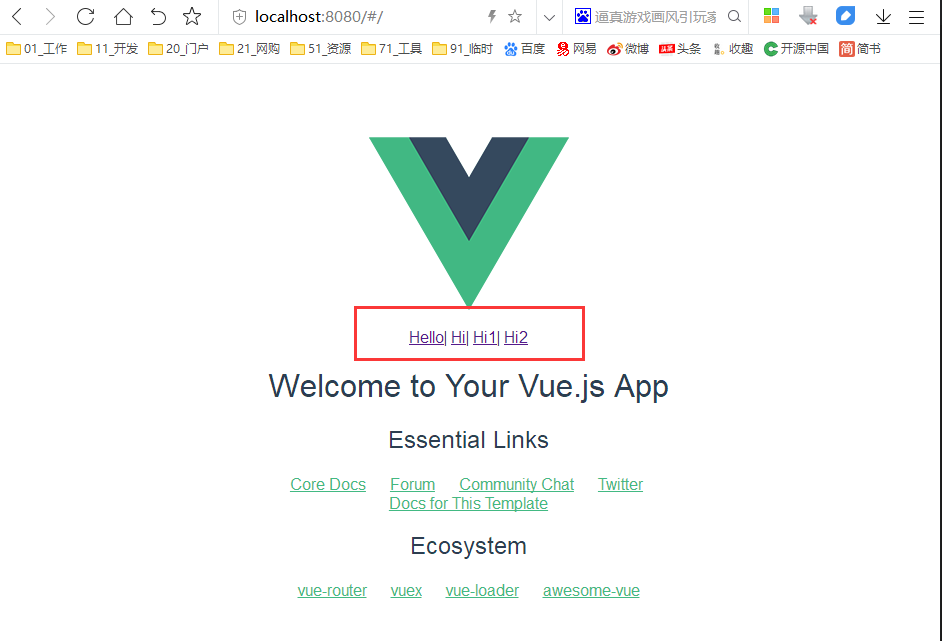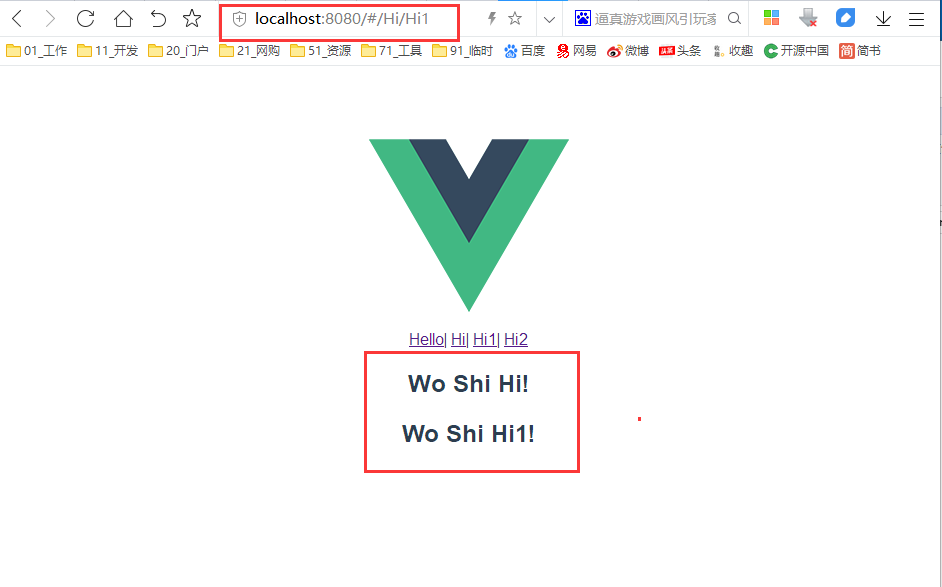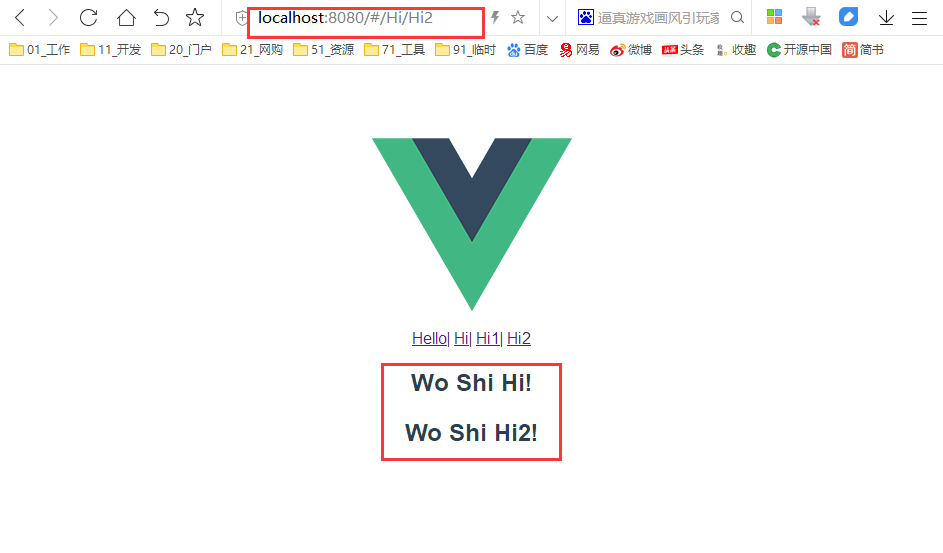实际生活中的应用界面,通常由多层嵌套的组件组合而成。同样地,URL 中各段动态路径也按某种结构对应嵌套的各层组件。借助 vue-router,使用嵌套路由配置,就可以很简单地表达这种关系。
观看此文档时应该先看“Vue-router HelloWorld”文档。
创建Hi1,Hi2两个新页面
在src/components目录下,新建 Hi1.vue 以及Hi2.vue文件。
<template>
<div>
<h2>{{message}}</h2>
</div>
</template>
<script>
export default {
name: "Hi",
data() {
return {
message : 'Wo Shi Hi1!'
};
}
};
</script>
<style scoped>
</style><template>
<div>
<h2>{{message}}</h2>
</div>
</template>
<script>
export default {
name: "Hi",
data() {
return {
message : 'Wo Shi Hi2!'
};
}
};
</script>
<style scoped>
</style>修改Hi.vue页面
修改src/components目录下Hi.vue文件。
<template>
<div>
<h2>{{message}}</h2>
<!-- 增加路由 -->
<router-view></router-view>
</div>
</template>
<script>
export default {
name: "Hi",
data() {
return {
message : 'Wo Shi Hi!'
};
}
};
</script>
<style scoped>
</style>改造App.vue的导航代码
改造app.vue的导航代码,用<router-link>标签增加了两个新的导航链接,增加Hi1及Hi2导航。
<template>
<div id="app">
<img src="./assets/logo.png">
<!-- 导航 -->
<div>
<router-link to="/">Hello</router-link>|
<router-link to="/Hi">Hi</router-link>|
<router-link to="/Hi/Hi1">Hi1</router-link>|
<router-link to="/Hi/Hi2">Hi2</router-link>
</div>
<router-view/>
</div>
</template>
<script>
export default {
name: 'App'
}
</script>
<style>
#app {
font-family: 'Avenir', Helvetica, Arial, sans-serif;
-webkit-font-smoothing: antialiased;
-moz-osx-font-smoothing: grayscale;
text-align: center;
color: #2c3e50;
margin-top: 60px;
}
</style>
修改router/index.js代码
修改router/index.js代码,增加子路由。子路由的写法是在原有的路由配置下加入children字段。
children:[
{path:'/',component:xxx},
{path:'xx',component:xxx},
]index.js全部代码为:
import Vue from 'vue'
import Router from 'vue-router'
import HelloWorld from '@/components/HelloWorld'
// 引入Hi
import Hi from '@/components/Hi'
// 引入Hi1
import Hi1 from '@/components/Hi1'
// 引入Hi2
import Hi2 from '@/components/Hi2'
Vue.use(Router)
export default new Router({
routes: [
{
path: '/',
name: 'HelloWorld',
component: HelloWorld
},
// 配置Hi对象
{
path: '/Hi',
name: 'Hi',
component: Hi,
//引子路由
children:[
{path:'/',component:Hi},
{path:'Hi1',component:Hi1},
{path:'Hi2',component:Hi2},
]
}
]
})
完成以上调整之后,我们就可以启动服务,在浏览器中输入以下信息,查看是否成功了:

点击Hi1

点击Hi2

通页面查看,我们可以看到Hi1和Hi2的页面,不仅包括自己页面的内容,还包括Hi页面内容,表示我们子路由配置成功